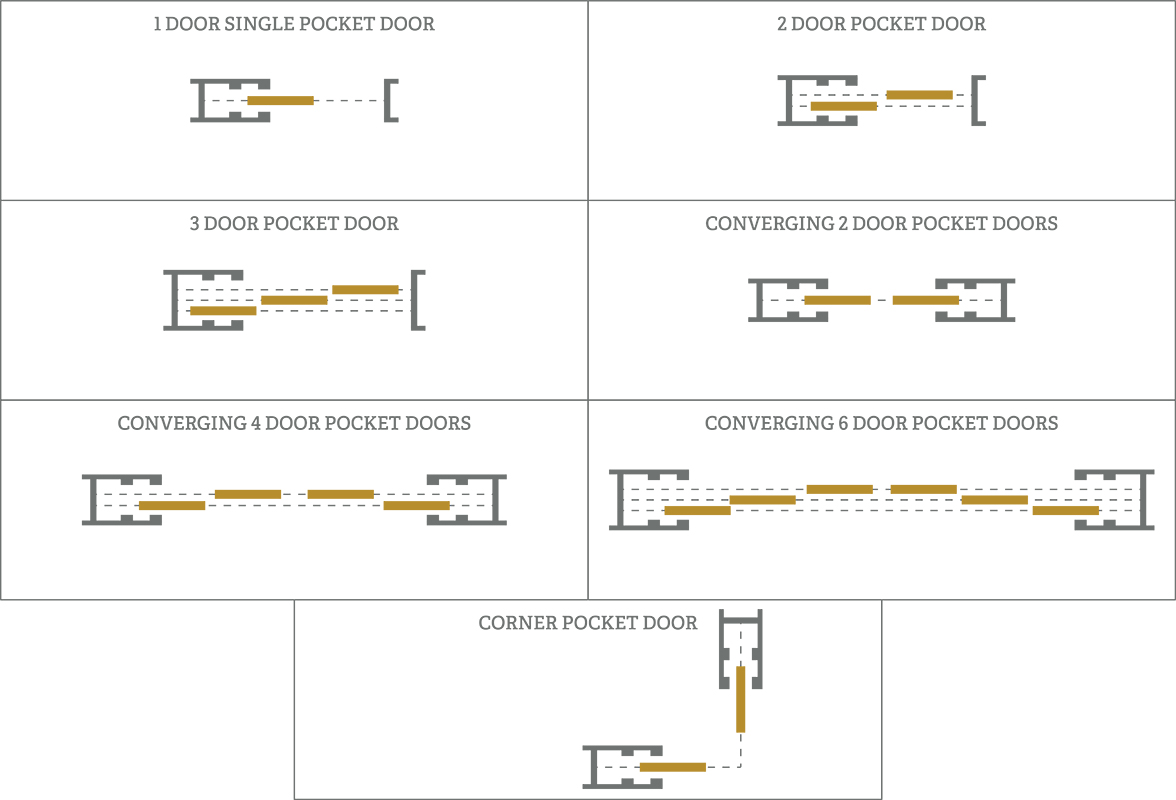1.800.891.8312
800-891-8312
FREE SHIPPING*
Free Shipping Details
Most orders over $500 qualify. Free shipping applies to Barn Door Hardware, Barn Doors, and Pocket Doors over $500.
Note: Front doors, interior doors, shower doors, any oversized door (wider than 3ft and taller than 7ft) and any special order doors have shipping costs calculated at checkout. Some barn door hardware track lengths do not qualify for free shipping.

How To Order Pocket Door Hardware & Tools Needed for Installation
Tuesday, May 14th, 2019
Author: Kate Allen - Rustica Founder and CEO
Share

Pocket doors are still a great option for installing doors in tricky areas around the home or office. A pocket door provides the ability to block off sound and achieve privacy while it hides inside of your wall. Small spaces and difficult substrate applications make pocket doors very useful. Pocket doors are great when you want that "open" and "modern, doorless" look for your space. Pocket doors work for basic residential homes as well as commercial office spaces. Essentially, any space where you need to create the functionality of a private, closed-off doorway as well as conceal the door inside of the wall is a perfect way to use a pocket door. Pocket doors are different from sliding barn doors in that pocket doors slide into the wall, hiding inside the wall when the pocket door is not in use. Sliding barn doors are always exposed, sliding on the outside of the wall.








When you install a pocket door, you will need the following tools and materials:
- Pocket door hardware for a 2 x 4 or 2 x 6 wall
- Pocket door frame for a 2 x 4 or 2 x 6 wall (this is for a remodel where you need the entire wood frame and the hardware)
- Pocket door lock
- Pocket door pull
- A Rustica door for use as your pocket door

Installation tools for installing the Rustica pocket door include:
- Jigsaw
- Drill
- Hammer
- Pencil
- Screwdriver,
- Measuring tape
- Speed square
- Chisel
- Paddle bit
- Drill bit
Buy Pocket Door Hardware and a Rustica Pocket Door today.
Powered by Froala Editor


Rustica Shop & HQ 1060 Spring Creek PlaceSpringville Utah 84663Customer Service & Sales(800)-891-8312

Hitching Post
Event Venue
1520 N Main Street
Springville UT 84663
PRODUCTS
FEATURES
COMPANY
BUSINESS



